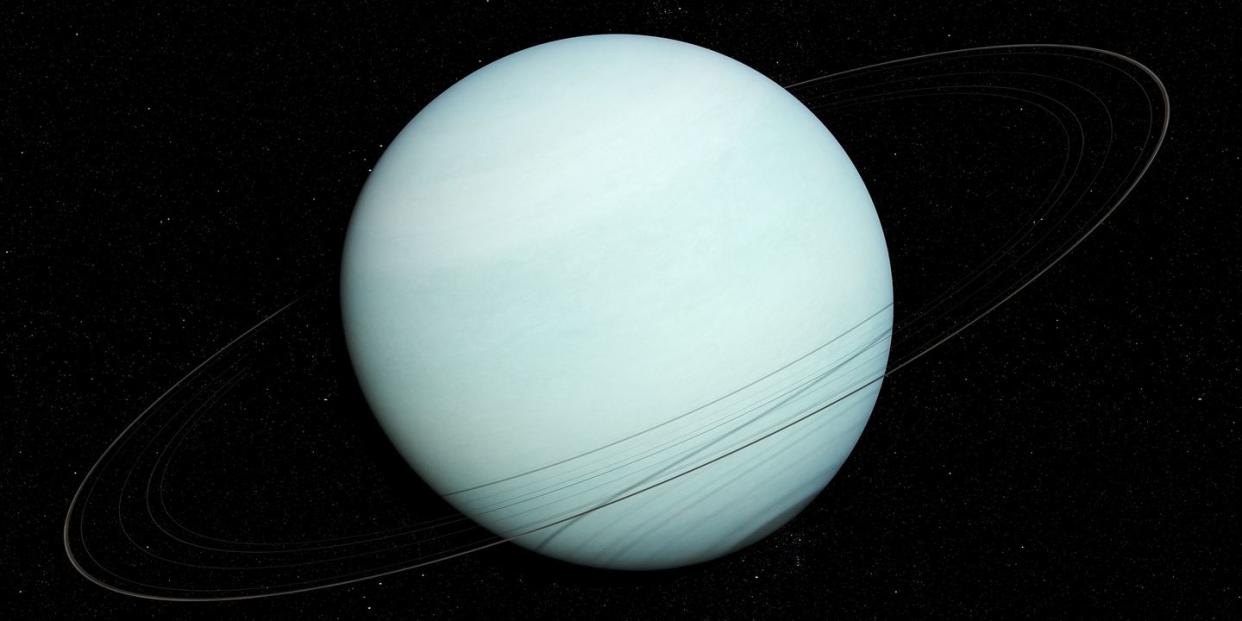Uranus, No Joke, Is Leaking Gas

Scientists discovered evidence of a Uranian plasmoid in 34-year-old Voyager 2 data.
Plasmoids are bubbles of atmospheric material that are stripped away by their respective parent body's magnetic field.
Other planets, including Venus, Earth, and Saturn, have plasmoids.
Scientists have discovered something strange lurking in a 34-year-old batch of data from the Voyager 2 mission: a plasmoid.
Plasmoids are globs of ionized gases pulled from a celestial body’s atmosphere. These bursts of atmospheric material are flung away from a planet by its magnetic field. This is the first time a plasmoid has been recorded at Uranus, though, and the discovery has revealed a lot about the mysterious planet.
Space physicists Gina DiBraccio and Dan Gershman of NASA's Goddard Space Flight Center were poring over Voyager data when they discovered an ionized hydrogen-filled plasmoid measuring roughly 127,000 miles by 250,000 miles. The scientists published their findings last year in the journal Geophysical Research Letters.
Atmospheric escape, as it's often called, is a common occurrence on other planets. Ionized hydrogen is slowly slipping off Venus’ surface, and atmospheric loss has been observed on Saturn, too. And then there’s Earth, which leaks roughly 90 tonnes of atmospheric material each year. (We still have plenty of atmosphere left—about 5,140 trillion tonnes.) Some of the moons in our solar system are leaking, too. Scientists have observed atmospheric loss on both Titan (1) and Io (2).
Magnetic fields serve an important purpose. They protect a planet's atmosphere from the solar winds that carry harmful radiation. These strong solar winds can stretch a planet's magnetosphere, creating an adorably named "magnetotail" along the trailing side of a planetary body. In the case of Earth's donut-shaped magnetosphere, this tail pinches closed.

But Uranus is a different beast entirely.
“The structure, the way that it moves...,” DiBraccio said, “Uranus is really on its own.” First, the planet is tipped over on its side. The axis of Uranus' magnetosphere is also 60 degrees off of its spin axis, creating a significant wobble in its magnetic field. Finally, some research has suggested that Uranus' magnetosphere may be seasonal, meaning it opens and closes with the changing seasons.
There's a lot more we need to learn about the planet's magnetic field. We've said it before and we'll say it again: We'd really love to see Uranus.
You Might Also Like

